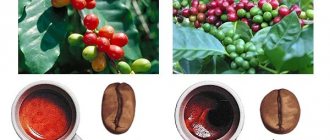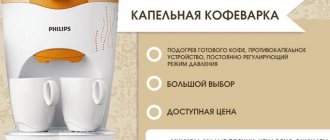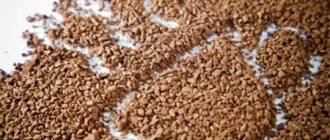Many times in my life I have had to deal with a situation where even fairly wealthy families use assorted mugs from different sets to serve coffee or tea. It doesn't look as nice as if they bought a couple of beautiful tea and coffee sets. This strange tradition, when each family member has his own mug, reminds me of Leo Tolstoy’s fairy tale “The Three Bears”. What immediately pops into my head is “Who was slurping in my cup?”, “Who was slurping in my cup and swallowed everything?”, “Who was sleeping on my bed?” and so on.
Assorted mugs usually end up in our kitchen for a reason. When people don't know what to give, they most often buy some kind of photo frame, or that newest mug with a hint of originality. I calculated that in my closet there are already about fifteen donated mugs, which I don’t use, since I prefer organic sets.
Even more surprising is the fact that some people have beautiful sets and safely gather dust in the closet, only to see the light of day once a year on New Year’s Eve.
“This is a festive set, there is no need for such beautiful dishes for every day,” say the owners of the set, taking out well-worn mugs from an equally well-worn sideboard.
I believe that everything in life should be done with taste: dressing, cooking, eating, drinking, traveling, loving. Even little things like beautiful dishes can greatly change our worldview and make life brighter.
What are a mug and a cup
The main determining factor of how a cup differs from a mug is the parameters of the glassware. A mug is traditionally perceived as a vessel of a simple geometric shape. Often cylindrical or resembling a truncated cone. Usually cold drinks and hot ones are poured. For example, tea, juices, beer. The first hot dishes are not suitable for mugs.
In one country, the utensil for drinking tea and coffee is called a cup, because it looks more like a bowl, and in another it is called a mug.
The volume of such containers is larger. They have good stability and a handle for convenience.
Important! In different countries, both containers may perform the same functions. This is correct, but it causes confusion. In some countries, utensils intended for tea and coffee in people's understanding are cups. In other countries, a container with the same functionality is called a mug.
Volume of the dishes in question
A mug, cup, glass and glass can, in principle, have the same capacity. But most often their volume is different.
The usual capacity of a mug is 250–500 cm³ (there are also liter ones). One of the reasons why express printing on mugs is in demand is the large size of the product, which allows fairly large designs to be applied to it.
A cup is a small vessel with a volume of approximately 200 cm³. Moreover, this parameter depends on the purpose:
- Tea rooms (also used for serving cocoa, chocolate, coffee with milk) can hold 200-250 cm³.
- Coffee shops that serve black coffee have a volume of 75-100 cm³, and for oriental coffee 50-70 cm³.
- Bouillon bottles , which usually have 2 handles, hold 350-400 cm³.
From left to right: tea, coffee and broth cups
As a rule, 200-250 cm³ of liquid is placed in a glass, and the capacity of the glasses is determined by the drink that is drunk from it:
- For champagne - from 125 to 200 ml.
- For juices and cocktails – from 200 to 350 ml.
- For beer (maybe without a stem) - 250-500 ml.
When were the first mugs and cups invented?
The very first cups were intended for royalty. Noble wines were poured into them. They were made from porcelain or clay. The vessel did not have a handle; its shape was flat and more like a saucer. His hands appeared in the 18th century. The idea belonged to the British. Now they could comfortably enjoy fresh, hot drinks.
When pouring your favorite drink into a mug or cup, we rarely think about the history of the two objects.
The first mugs appeared in China. The appearance of the first samples was different from modern products, but the functions remained the same. They belonged to the life of the peasants and the life of the rich class.
Similar products from the 15th century resembled mini jugs with a cylindrical shape. In the 19th century, the aluminum mug appeared and became very popular. Its volume was up to 500 ml, so it often served as a vessel for collecting water for cooking.
The mug appeared in the 19th century; it was made of light alloy so that the military could use it in the field.
Before the adoption of Christianity, in Rus' a mug was used to measure the amount of liquids (mead, water). Its volume was 1.23 liters. Clay varieties with a wide elongated shape, which lacked handles, were called “charkas” in Rus'.
Purover
When brewing coffee in various pour-overs, we want to maximize its taste and aroma. And here the dishes we use also matter. Decanter
A decanter, or server, is a container in which pour-over coffee is brewed (and served). It can look different, but the most important thing is that it should have a wide base and a narrowed (but not too narrow) neck. For example, you can look at Hario decanters or remember what a Chemex looks like - it is both a funnel and a decanter.
Decanters are designed to aerate coffee, an idea coffee professionals borrowed from sommeliers. When the drink rotates in the server, volatile substances will be released, which will make the aroma of the coffee brighter and help you better feel its taste. In addition, this will mix the different layers of coffee extraction and make the drink more homogeneous.
What are cups and mugs made of?
Cups and mugs consist of walls of varying thicknesses. The bottom of small containers is round, horizontal on the outside. This allows you to place the products on a table or other horizontal surfaces. The cup is equipped with a handle for drinking hot drinks. Often it comes with a saucer.
Mugs can also have handles or go without them. Thick walls give a person the opportunity to calmly hold such an object in his hand at the moment when there is a scalding drink inside.
What is the difference and what is common between a mug and a cup?
There are several signs that determine the difference between a cup and a mug.
- The first difference is the difference in wall thickness. In a mug they are thicker, which allows the vessel to keep the drink hot longer. The cup has thin walls and the drink cools down faster.
- Vessels are distinguished by their volume. On average, a cup can be filled with 180 ml, which is the volume parameter of standard dishes. The container loading has a certain dependence on the drink that is poured into the container. The smallest variety has a volume of no more than 50 ml.
The cup should fit into the palm of the drinker.
A standard medium-sized mug has a volume of 250 to 500 ml.
- The cup comes complete with a saucer. This is associated with heating of the thin walls of this type of cookware. When hot tea or coffee is poured into it, the drinks are given a little time to cool. But if you don’t want to wait, the hot drink is poured into a saucer. The simplest configuration option is a wide saucer with raised edges and a cup with a flat, wide bottom, which can be conveniently placed both on the saucer and on the table.
- The mug represents a simpler vessel for daily use. Cups, if they make up a service, are bought for special occasions, served in restaurants, in cafes.
- Mugs are not associated with a separate purpose. Any drinks are poured into them in volumes suitable for the container. Cups, according to etiquette, may have certain conditions of use. Rare varieties of tea and coffee can be poured into them.
- The shape of the cup resembles a hemisphere. A mug can be distinguished by the fact that it can be compared to an elongated cylinder.
Today the vessels have the same purpose, but 100 years ago they were intended for drinking completely different drinks.
Standard and doppio portions
In a coffee machine, calculations are included in the automation system. The unit itself measures boiling water in milliliters and the brewed product in grams. Typically, cups of 30-35 ml are obtained. Each contains two teaspoons of ground grains.
The concept of “double espresso” does not mean that the mass of crushed beans with a standard amount of liquid increases. The amount of both ingredients doubles.
The result is a product called “doppio”. 60 ml of brewed Robusta or Arabica is poured into prepared mugs. For cooking use 4 tsp. ground beans. For a triple portion of “triple”, take 6 spoons and plus 0.5-0.6 liters of water. A mug that can hold 90 ml is suitable for pouring.
What can you drink from cups and mugs?
Modern culture does not set strict rules about which drinks to drink from which container. People use what is most convenient for them, what gives them comfort.
Cups for broth
Observations force us to admit that people can use both types of glassware equally, but there are times when only one type is suitable for a particular drink.
Despite the convenience, only broth can be consumed from such dishes.
For example, some cups are more suitable for hot broth. They have two handles at once. Often they are kept for only one purpose - to eat hot liquid first courses.
Beer mugs
Large mugs with a volume of more than 250 ml. are called "beer mugs". They are made of clay and glass. They have a thick handle that spans the entire height of the mug. The standard version is a faceted glass mug. They drink beer from this one.
In summer, kvass is also poured into such dishes.
Tea cups and mugs
More often at home they use standard cups and mugs intended for drinking tea or coffee. Their volume allows you to hold a small amount of aromatic hot drink. Having thin walls, they do not retain heat for long. Hot tea or coffee in a cup cools quickly. Hence the conclusion - this is a type of tableware designed for quickly drinking a hot drink.
It is advisable to give preference to high-quality earthenware or porcelain, since the thermal conductivity near the walls will be lower.
Due to its volume, the mug does not limit the consumer’s desire to enjoy hot tea or coffee longer. A person can drink his favorite drinks from a mug in large quantities. The thick walls of the mug retain the heat of the drink for a long time. In addition, a mug can be used as a vessel that allows simultaneous brewing and drinking of liquid.
The cup is more suitable for drinking small amounts of coffee and tea.
By way of example, we can identify several well-known names of coffee drinks, as well as types of tea that are drunk from tea cups. Among the coffees are espresso, latte and Americano. Today it is customary to buy tea in tea bags, which are brewed directly in a cup or in large leaf form. In the latter case, tea is brewed in a teapot, which is served separately.
The cup usually comes with a saucer.
It is recommended to use bowls for cold drinks. Sake is drunk from such vessels in Japan. You can also try Japanese vodka from bowls in Russia by visiting a Japanese restaurant. Preparing and serving sake is a whole ceremony.
It is recommended to drink cold drinks from a bowl, especially when it comes to drinking sake.
There are also ceremonies in the culture of consuming tea drinks from cups. In addition to the fact that you cannot use other utensils in them besides cups, there are rules that must be followed. The same rules unofficially exist for ordinary tea drinking.
- The teaspoon should not be in the cup during or after tea drinking.
- When grasping the tea handle with your fingers, do not bend one finger. This was only considered appropriate during the Victorian era.
Due to the high caffeine content, tea is recommended to be consumed after meals.
Types of tea cups
With tea cups things are much simpler. Cups can be made of glass, porcelain, clay or ceramic. It is best to choose tea cups made of thick-walled porcelain, as this material retains heat very well.
Tea cups can be small in volume; such cups are also called tasting cups.
The ideal tea set is wide, medium-sized porcelain cups and saucers.
What is the correct name for a mug without a handle?
Such a mug is usually called a bowl. It represents a kind of cup without handles. It has a hemispherical or truncated conical shape. This type of tableware is used for drinks and first courses. You can store food in it.
In Europe, tea is drunk only from special bowls whose volume does not exceed 100 ml.
Bowls were known even before our era. Their origin is attributed to the second half of the 1st millennium. The first dishes of this type were made by potters from clay. Modern samples are mainly factory-made products.
A bowl is not always associated with a mug. Despite the fact that the density of its walls allows a hot drink to retain heat for a long time and the volume can be quite large. When asked what a cup without handles is, many people also call it a bowl.
In China, the volume of the bowl should not exceed 50-60 ml.
Note! The bowl has many purposes. In different countries it is used both as a vessel for tea and as a utensil for food. For example, in Asian countries it is often called an Asian tea cup or for serving rice.
In the kitchen of the peoples of the world
So, cups with one handle are served:
- with any tea - green, black, fireweed, with herbal additives;
- with coffee - black, with milk, with ice cream, with cream;
- with cocoa;
- with hot chocolate.
Despite the different contents, the described utensils are called “tea cups”. In the countries of the Asia-Pacific region, cups without handles - bowls - are used when serving tea or kumis.
Drink cups hold 200-250 ml of liquid. The exception is coffee. For an invigorating drink with a slight sourness of traditional European preparation, use a 100 ml porcelain cup. But oriental coffee is poured into a cup of 50 or 75 ml. In the Japanese tea ceremony, cups with a volume of 1 go are used - this is 180 ml.
Nutritious broths prepared with poultry or young veal meat, as well as pureed vegetable soups, are served in cups with two handles with a volume of 300-400 ml. No matter how beautiful a soup spoon is, when it comes into contact with the tongue, it communicates its inedibility and distracts from enjoying warm soups. In addition, a cup is more reliable for a person with poor health, when his hands tremble and it is difficult to carry a spoon back and forth. Convenient ring-shaped handles on opposite sides of the cup help you have a healthy and beautiful lunch.
A small cup without handles - a bowl - is convenient to use for raspberries, wild strawberries, blueberries when serving them with milk or cream.
In general, a cup has many synonyms in the kitchen, it all depends on its purpose. So, for porridge they use a bowl, for a salad made from small ingredients - a bowl, and a vessel for milk for a cat is called a crock.
Features of caring for cups and mugs
Cups are usually made with a white inner coating. This is done with ordinary clay, ceramic and porcelain dishes. After drinking tea or coffee from them, a coating remains on the inner walls. The same thing happens if you drink concentrated juices from them. The dishes will look ugly. If you don’t wash it, the plaque will firmly adhere to the surface and can only be removed if you work hard with a sponge.
Thanks to the volume, you can brew tea directly in the vessel.
It is necessary to wash tea utensils immediately after they have been used for their intended purpose, without waiting a long time.
Mugs can have either a light-colored or an internal coating identical to the external design. Due to their durability, they can be washed in dishwashers in separate compartments. The same goes for other different tea utensils with thick walls.
Thin walls do not accumulate heat and allow the drink to cool quickly.
Various means are used to wash. They may vary, but should be safe for humans and have an effective cleansing result. Today, such qualities are attributed to the Fairy washing gel with a safe composition.
There are varieties of dishes that require only manual care. These are products made of porcelain. This requirement applies to all porcelain dishes. The dishwasher cannot be used in this case. Porcelain products have very thin walls. The sudden flow of water that splashes over the dishes inside the machine after switching on can damage them.
A cup is a utensil for quickly drinking a drink.
Porcelain is washed carefully in warm water with soft sponges. Then they are placed on the table upside down to drain the water. You should purchase a special absorbent towel.
Popular manufacturers
Among manufacturers, products made by Chinese, German, French and Czech masters are popular. It is their tea sets that gourmets choose.
- Luminarc is a French manufacturer of kitchenware and tableware. In most cases, the company uses heat-resistant glass, high-quality porcelain for production. The products are of high quality and durability.
The products are of high quality and durability. - Emerald, a manufacturer from the Middle Kingdom, offers entire porcelain sets. The durability of the products is due to the bone content in the material. In the absence of gold or silver paintings, the cups can be washed in the dishwasher.
The durability of the products is due to the bone content in the material. - German Kahla cups are durable. They have a modern design and a reasonable price tag.
German Kahla cups are durable. - Midori is one of the largest Chinese brands specializing in the production and sale of hard porcelain products. The cups are characterized by lace patterns and recognizable lines.
The cups are characterized by lace patterns and recognizable lines. - St. Petersburg Imperial Porcelain Factory named after Lomonosov. A domestic manufacturer whose products are known all over the world. The products are of high quality. It is possible to manufacture cups and other utensils according to individual projects.
The products are of high quality. - The legend of Czech porcelain – Leander. The tableware, known all over the world for more than a century, is manufactured using strictly secret technology and is characterized by high strength and durability.
The dishes are manufactured using strictly secret technology and are characterized by high strength and durability.











